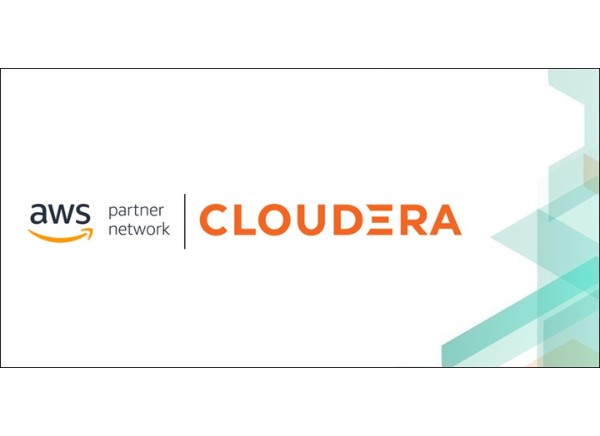
Cloudera, a trusted enterprise artificial intelligence (AI) data solutions company, has officially inked a Strategic Collaboration Agreement (SCA) with Amazon Web Services, Inc. (AWS). This strategic move underscores Cloudera’s commitment to turbocharging cloud-native data management and analytics on AWS, fostering a closer partnership between the two tech giants. The agreement paves the way for Cloudera to harness the power of AWS services, driving continuous innovation and reducing customer costs through Cloudera’s open data lakehouse on AWS, designed for trusted enterprise generative AI.

Cloudera, a trusted enterprise artificial intelligence (AI) data solutions company, has officially inked a Strategic Collaboration Agreement (SCA) with Amazon Web Services, Inc. (AWS). This strategic move underscores Cloudera’s commitment to turbocharging cloud-native data management and analytics on AWS, fostering a closer partnership between the two tech giants. The agreement paves the way for Cloudera to harness the power of AWS services, driving continuous innovation and reducing customer costs through Cloudera’s open data lakehouse on AWS, designed for trusted enterprise generative AI.
As an AWS Independent Software Vendor (ISV) Workload Migration Program (WMP) Partner and boasting a Cloudera Data Platform (CDP) Public Cloud listing on the AWS Marketplace, Cloudera simplifies the transition for customers by facilitating the use of credits to expedite workload migration to the cloud and the purchase of CDP on AWS.
Cloudera has selected AWS to manage the most critical components of CDP, encompassing data in motion, data lakehouse, data warehouse, operational database, AI/machine learning, master data management, and end-to-end security. This strategic alignment facilitates seamless migration to CDP in the cloud, obviating the need for application refactoring and accommodating hybrid deployments. Furthermore, Cloudera has tightly integrated CDP with AWS services such as Amazon Simple Storage Service (Amazon S3), Amazon Elastic Kubernetes Service (Amazon EKS), Amazon Relational Database Service (Amazon RDS), and Amazon Elastic Compute Cloud (Amazon EC2), delivering a cohesive platform that cuts costs and capitalizes on the latest AWS innovations. This integration relieves Cloudera customers of the burden of managing these integrations independently.
Paul Codding, Executive Vice President of Product Management at Cloudera, highlighted the benefits of this deeper collaboration: “Deepening our collaboration with AWS gives customers even more reasons to choose to run the Cloudera Data Platform on AWS. With tighter hardware and AWS service integration, customers get the best possible experience with strong security and governance, along with new cost reduction options to support their most critical analytical workloads.”
The impact of this collaboration on customers is already evident. David Wroe, Principal Software Engineer and Solutions Architect for Be The Match, a non-profit organization focused on cell therapy, shared, “Our move to CDP Public Cloud on AWS for Be The Match’s search and match platform has resulted in significant cost savings for the organization and a reduced infrastructure maintenance expense measured in millions of dollars. As a non-profit, this affords us tremendous operational flexibility that was not previously possible.”
AWS and Cloudera will not only scale cloud-native data management and analytics but also collaborate on marketing and co-selling initiatives, further enhancing the value proposition for customers.
Cloudera’s longstanding partnership with AWS in the cloud-native data management and analytics arena continues to evolve, promising a seamless user experience and real data analytics and insights for customers. Chris Grusz, General Manager of Technology Partnerships and Marketplace at AWS, affirmed, “Cloudera has strengthened their collaboration with AWS for shared customers to leverage their existing investments in CDP and accelerate their modernization to the cloud.”
